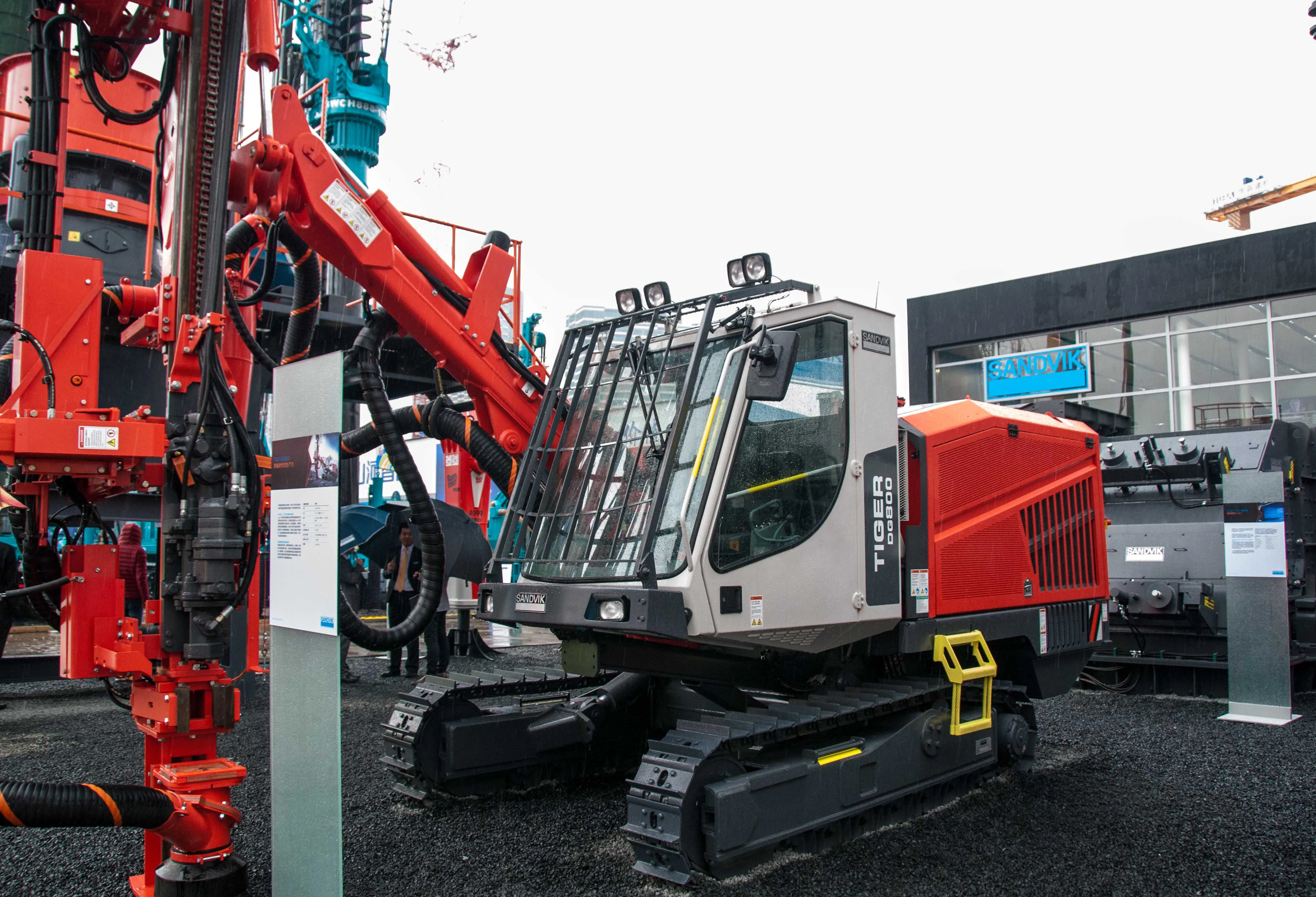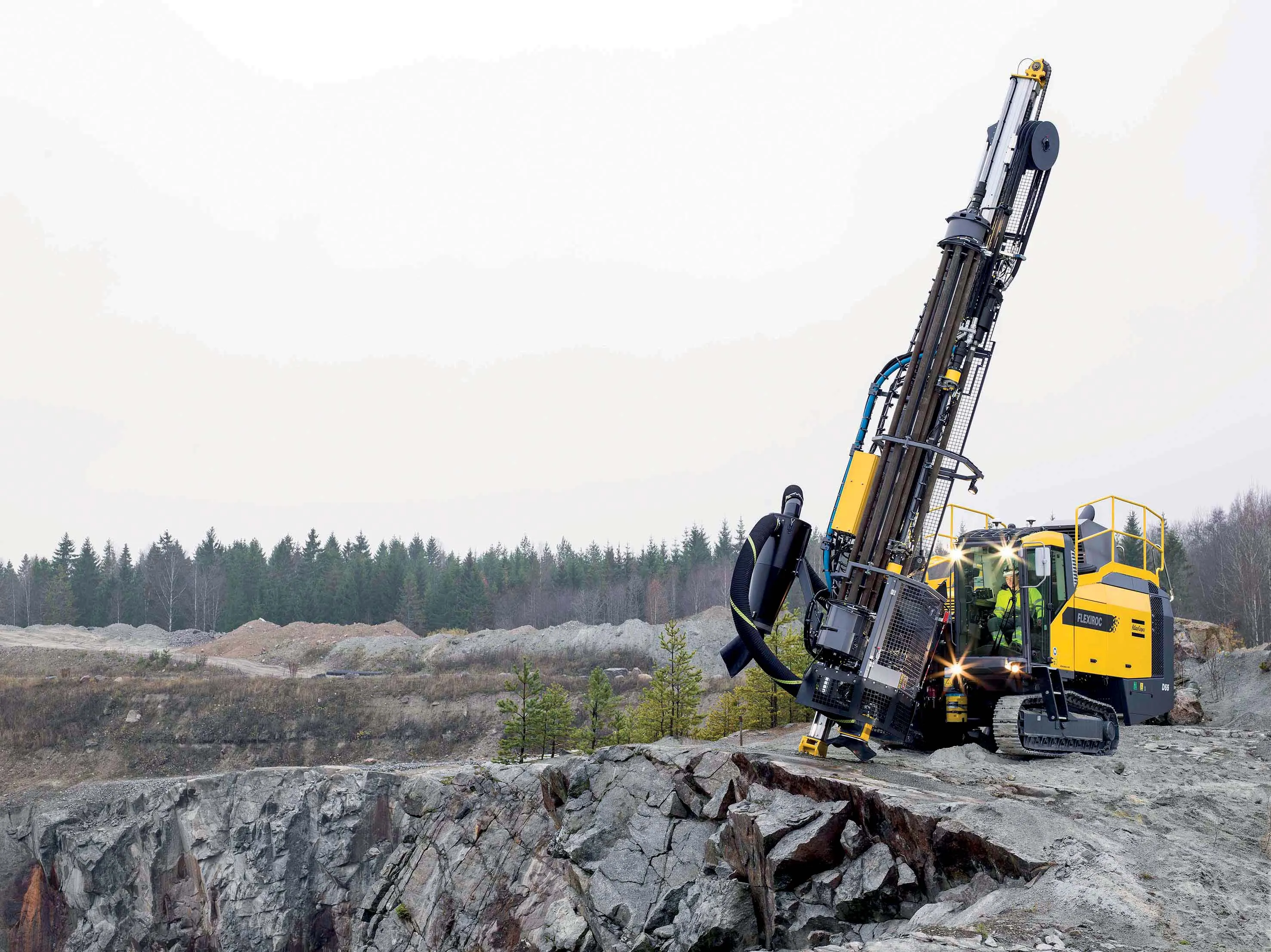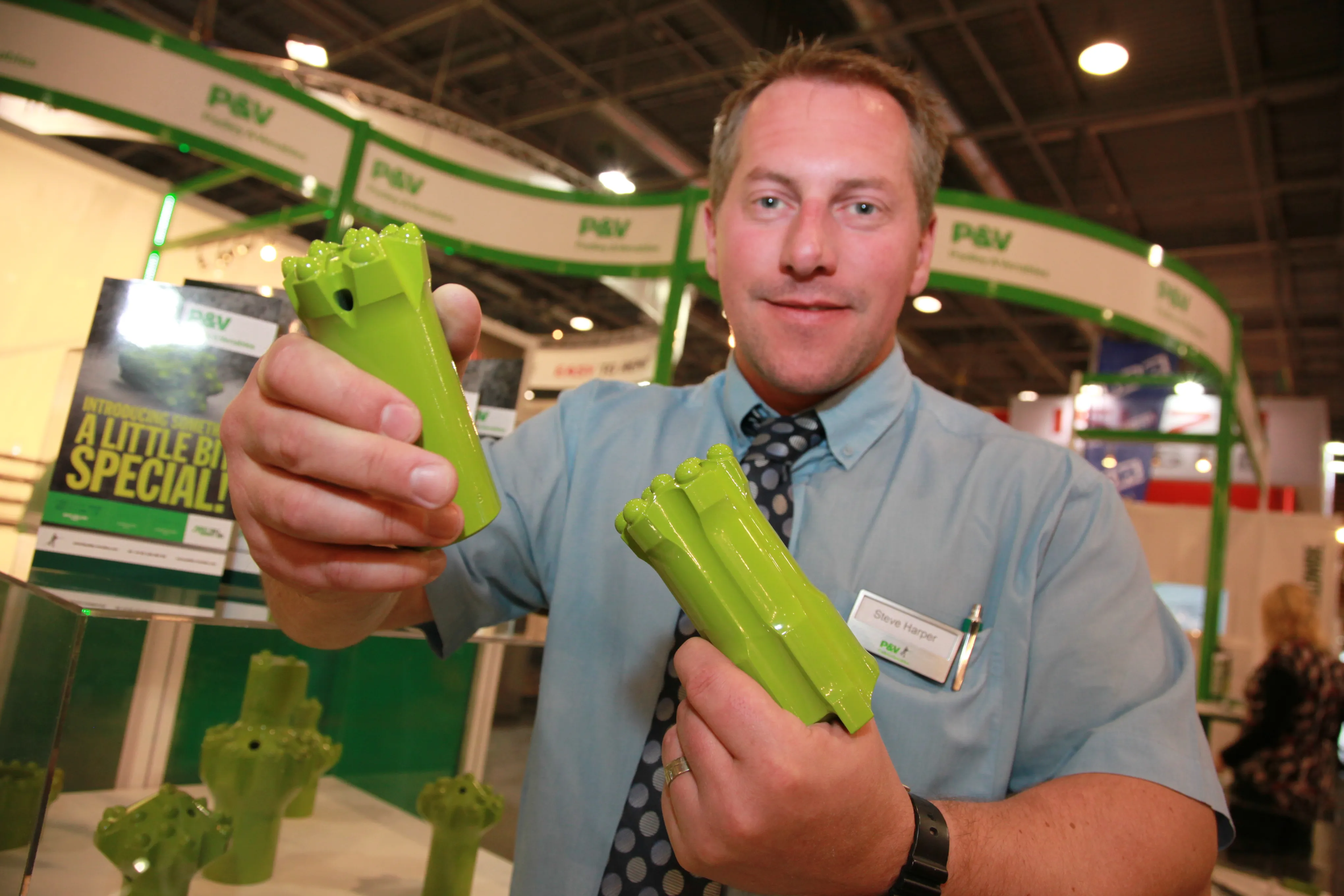Sandvik introduced its new Tiger range of top hammer drills at bauma 2014 in Shanghai, China. With a low centre of gravity and track driven the Tiger offers stability and high stability on uneven terrain. The DG700 and DG800, the two models currently launched, are designed with road cutting, pipeline drilling, foundation drilling, and production drilling in mid-sized quarries applications in mind.
Crucial to their utility is the Sandvik rock drills which are coupled to a fixed boom and rod-handling syst
November 26, 2014
Read time: 2 mins

Crucial to their utility is the Sandvik rock drills which are coupled to a fixed boom and rod-handling system. The rock-drilling control system not only ensures high productivity rates for penetration but also smooth collaring, prolonging service life, and giving better hole quality.
Drilling is controlled by a joystick in the cab. The cabin is soundproofed to keep noise level well below 85dBA and it is ROPS and FOPS certified.
Power for the Tiger series comes from a 179kW Tier 2 engine. Maintenance is made easier by components that are easy to reach in addition to ground-level daily service points.
Both models weigh in at 14.7 tonnes. The main difference is the rock drill. An HL710 19.5kW unit is fitted to the DG700. This allows drilling of holes with a diameter of 64-115mm giving a production capacity of up to a million tonnes per year. Flushing air is 8.1m3/min at up to 10 bar. The DG800 comes with a HL810T21kW drill to give holes of between 64 and 127mm. Production capacity is 1.1 million tonnes per year and flushing air is 9.6m3/min also at up to 10 bar. Both models can have 38, 45 or 51mm rock tools.







